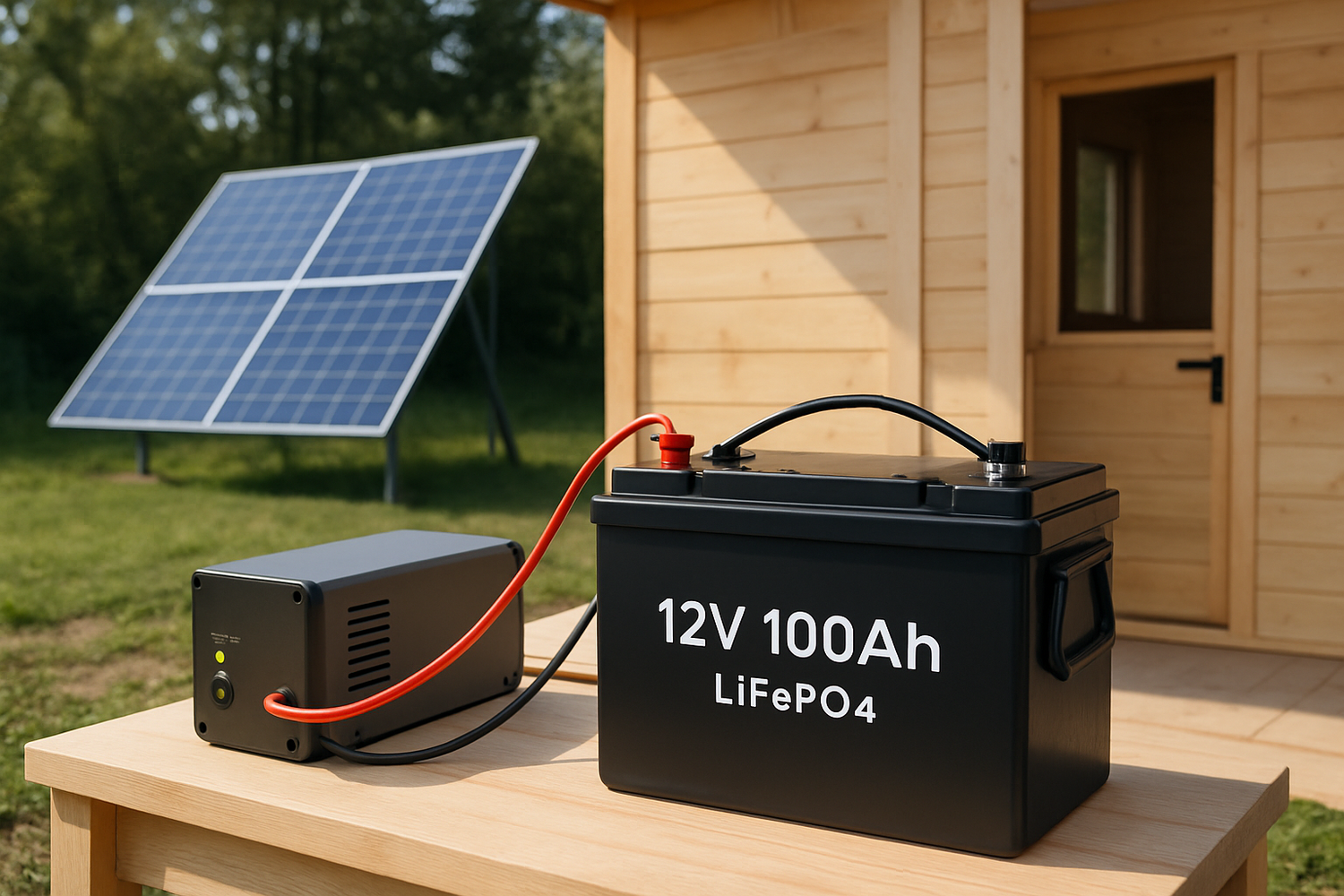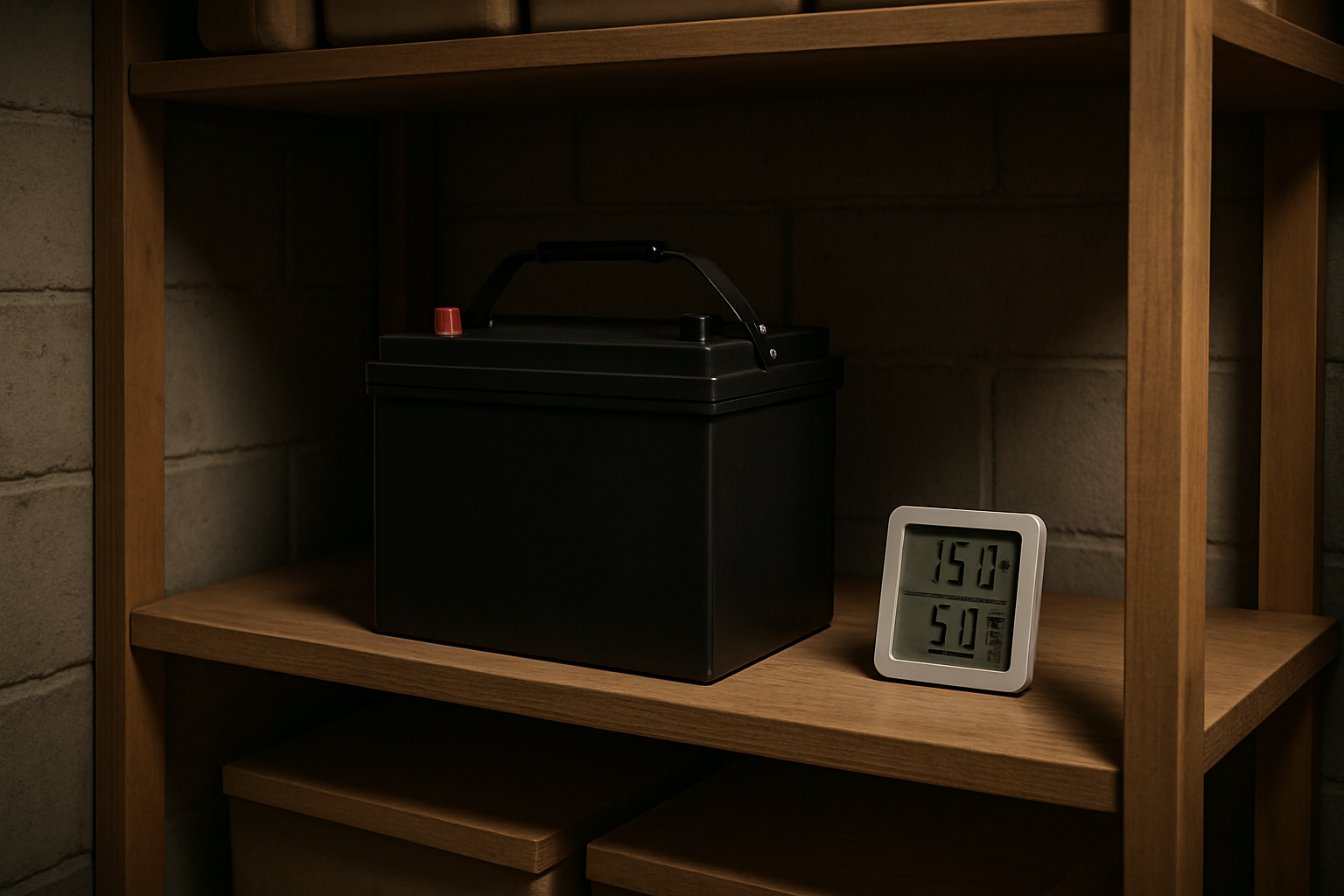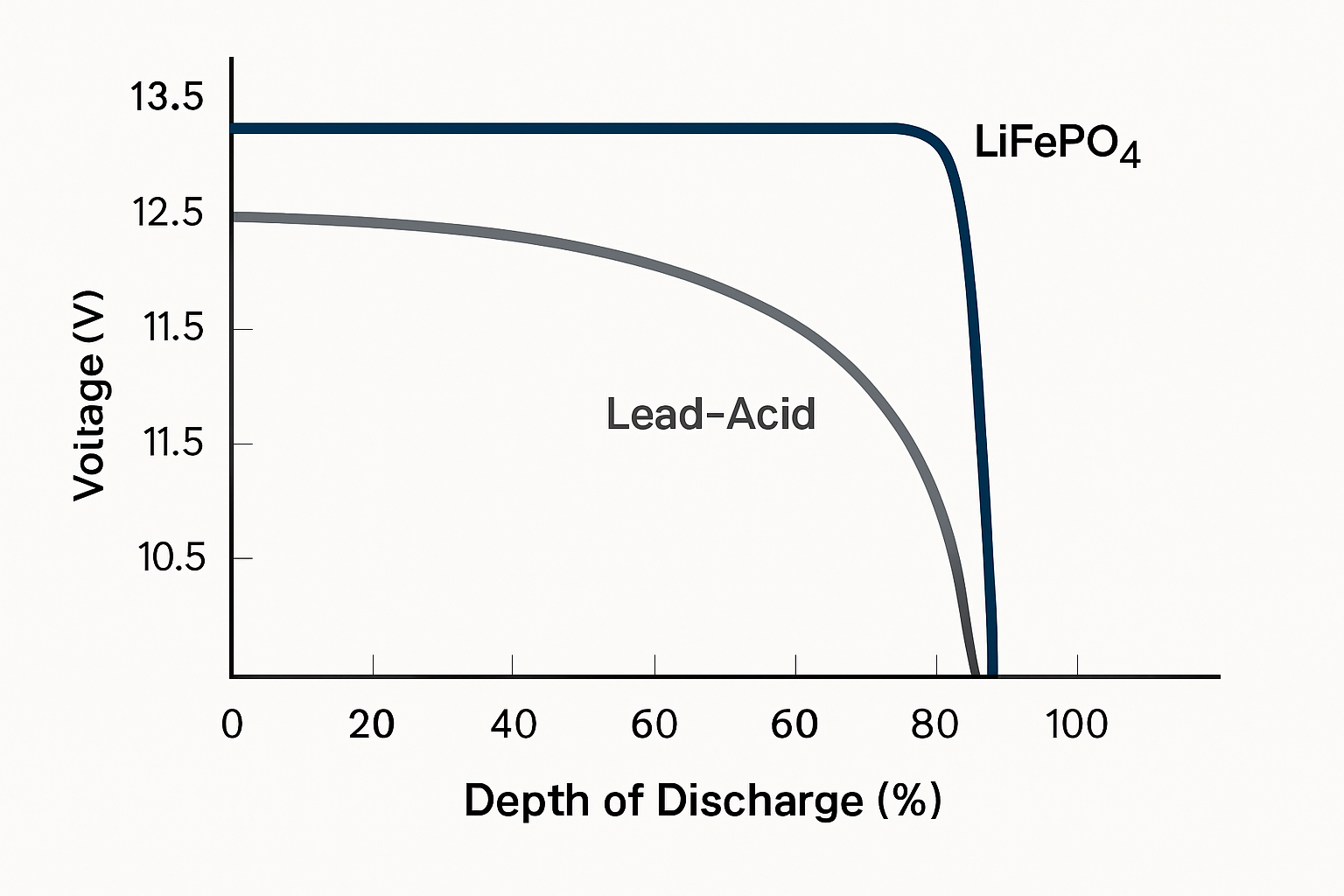Selecting the right 12V 100Ah LiFePO4 battery involves more than just matching voltage and capacity. Lithium Iron Phosphate (LFP or LiFePO4) technology offers significant advantages in safety, lifespan, and efficiency, making it a premier choice for demanding applications like RVs, marine vessels, and off-grid solar systems. To make a truly informed decision, you must look deeper into the technical specifications that define a battery's performance and reliability. This overview provides a clear path to identifying a high-quality battery that meets your specific energy needs.
1. Core Specifications: Beyond Voltage and Capacity
While '12V 100Ah' defines the basic parameters, the real performance indicators lie in the details of how the battery delivers that energy over its lifetime.
Cycle Life and Depth of Discharge (DoD)
Cycle life specifies how many times a battery can be charged and discharged before its capacity degrades to a certain percentage of its original rating. LiFePO4 batteries are known for their long cycle life, often exceeding 3,000 cycles. However, this is directly influenced by the Depth of Discharge (DoD)—the percentage of the battery's capacity used in each cycle. A battery consistently discharged to 80% DoD will have a longer life than one repeatedly drained to 100%. Unlike lead-acid batteries, which are often limited to a 50% DoD to prevent damage, LiFePO4 batteries can safely handle deep discharges of 80% or more, giving you more usable energy.
| Feature | LiFePO4 Battery | AGM Lead-Acid Battery |
|---|---|---|
| Typical Cycle Life | 3,000 - 5,000+ cycles | 300 - 700 cycles |
| Recommended DoD | 80-100% | 50% |
| Usable Energy (100Ah) | 80Ah - 100Ah | 50Ah |
| Weight (Approx.) | 25-30 lbs | 60-70 lbs |
Continuous and Peak Discharge Current
The continuous discharge current is the maximum current a battery can consistently provide. The peak discharge current is the burst of power it can supply for a short period, typically a few seconds. These figures are critical for applications with high-power motors or inverters. A battery with a 100A continuous discharge rating can power devices that draw up to 1200W (12V x 100A) without issue. Ensure the battery's discharge capabilities match or exceed the demands of your connected equipment.
2. The Battery Management System (BMS)
The Battery Management System (BMS) is the electronic brain of a LiFePO4 battery. It is not an optional feature; it is fundamental to the battery's safety, longevity, and performance. A high-quality BMS provides several critical protections.
Essential BMS Protections
A robust BMS actively monitors and protects the battery cells from common operational hazards. Key functions include over-voltage protection during charging, under-voltage protection during discharging, over-current protection, and short-circuit protection. Additionally, temperature protection is vital, as the BMS will prevent charging or discharging in extreme hot or cold conditions that could damage the cells.
Advanced BMS Features
Beyond basic protection, advanced BMS units offer cell balancing. This function ensures all individual cells within the battery pack maintain an equal state of charge, which is crucial for maximizing capacity and extending the battery's overall lifespan. Some premium batteries also include communication ports (like CAN or RS485) that allow the BMS to transmit data to external monitoring systems, providing valuable real-time insights into battery health.
3. Physical and Environmental Durability
A battery's construction determines its resilience in the environment where it will be used. From dusty trails to humid marine settings, the physical design is a key factor in its reliability.
IP Rating and Enclosure Quality
The Ingress Protection (IP) rating indicates how well a battery's enclosure protects against solids (like dust) and liquids (like water). An IP65 rating, for example, means the battery is completely dust-tight and can withstand low-pressure water jets. This is often sufficient for RV and most marine applications. For environments with a risk of submersion, a higher rating like IP67 would be necessary.
Operating Temperature Range
LiFePO4 batteries perform well across a wide range of temperatures. However, their performance can be affected by extremes. A critical feature managed by the BMS is low-temperature charge protection, which prevents charging below freezing (0°C or 32°F) to avoid irreversible damage. High-quality batteries will specify a safe operating temperature range for both charging and discharging.
4. Performance and Efficiency Metrics
Efficiency metrics reveal how effectively a battery stores and releases energy. These factors directly impact the overall performance of your energy system.
Energy Density and Weight
LiFePO4 batteries have a much higher energy density compared to lead-acid batteries. This means they can store more energy in a smaller and lighter package. A 12V 100Ah LiFePO4 battery typically weighs less than half of a lead-acid equivalent, a significant advantage for mobile applications like boats and RVs where weight is a primary concern.
Round-Trip Efficiency
Round-trip efficiency measures how much energy you get out of a battery for every unit of energy you put in. LiFePO4 batteries boast an impressive round-trip efficiency, often exceeding 90%. In contrast, lead-acid batteries can be closer to 80%. This higher efficiency is particularly beneficial in solar energy systems, as it means more of your generated solar power is stored and available for use. As noted in the Renewable Power Generation Costs in 2024 report, the ability to shift energy with minimal loss is a key benefit of battery storage. To see how these metrics translate into real-world solar storage performance, a detailed analysis of system efficiency and component matching is crucial. For a deeper look into optimizing your entire setup, the ultimate reference on solar storage performance provides valuable insights.
5. Safety Certifications and Manufacturer Trust
Independent certifications and a manufacturer's track record provide assurance of a battery's quality and safety. These are non-negotiable factors for a product that stores significant amounts of energy.
Key Safety Standards
Look for batteries that are certified to recognized safety standards. Certifications like UL (Underwriters Laboratories), CE (Conformité Européenne), and RoHS (Restriction of Hazardous Substances) indicate that a battery has undergone rigorous testing for safety, performance, and material composition. UN38.3 is another critical certification that ensures the battery is safe for transportation.
Evaluating Manufacturer Expertise
Choose a manufacturer with a proven history in lithium battery technology and energy storage systems. Companies specializing in this field are more likely to have refined their engineering and quality control processes. According to the Energy and AI report by the IEA, battery production relies on complex supply chains where quality and safety standards are paramount. A reputable manufacturer will be transparent about their specifications and stand behind their product with a solid warranty.
Making Your Final Selection
Choosing the best 12V 100Ah LiFePO4 battery requires a balanced assessment of its technical specifications, safety features, and physical construction. By focusing on cycle life at a realistic DoD, ensuring the BMS provides comprehensive protection, verifying the enclosure's durability, and confirming safety certifications, you can invest in a reliable power source. The right battery will not only meet your immediate power needs but also deliver dependable performance for years to come.
Frequently Asked Questions
Can I connect multiple 12V 100Ah LiFePO4 batteries in series or parallel?
Yes, you can connect identical 12V 100Ah LiFePO4 batteries to increase either voltage or capacity. Connecting them in series (positive to negative) increases the total voltage (e.g., two 12V batteries make a 24V system). Connecting them in parallel (positive to positive, negative to negative) increases the total capacity (e.g., two 100Ah batteries provide 200Ah). It is critical to use batteries of the same model, age, and charge level, and to ensure the BMS is designed to support such configurations.
What is the real-world lifespan of a 12V 100Ah LFP battery?
The lifespan of a LiFePO4 battery is typically measured in charge cycles and can range from 3,000 to over 5,000 cycles. In terms of years, this can translate to 10 years or more, depending heavily on usage patterns. Factors that influence lifespan include the depth of discharge, operating temperatures, and the quality of the battery's BMS. A battery that is regularly only partially discharged will last longer than one that is frequently fully depleted.
How does a LiFePO4 battery compare to a lead-acid battery of the same capacity?
A 12V 100Ah LiFePO4 battery offers several distinct advantages over a 12V 100Ah lead-acid battery. It provides significantly more cycles (3000+ vs. 300-700), allows for deeper discharging (80-100% usable capacity vs. 50%), weighs less than half as much, and operates with higher round-trip efficiency. While the initial cost of a LiFePO4 battery may be higher, its longer lifespan and superior performance often result in a lower total cost of ownership.





Leave a comment
All comments are moderated before being published.
This site is protected by hCaptcha and the hCaptcha Privacy Policy and Terms of Service apply.